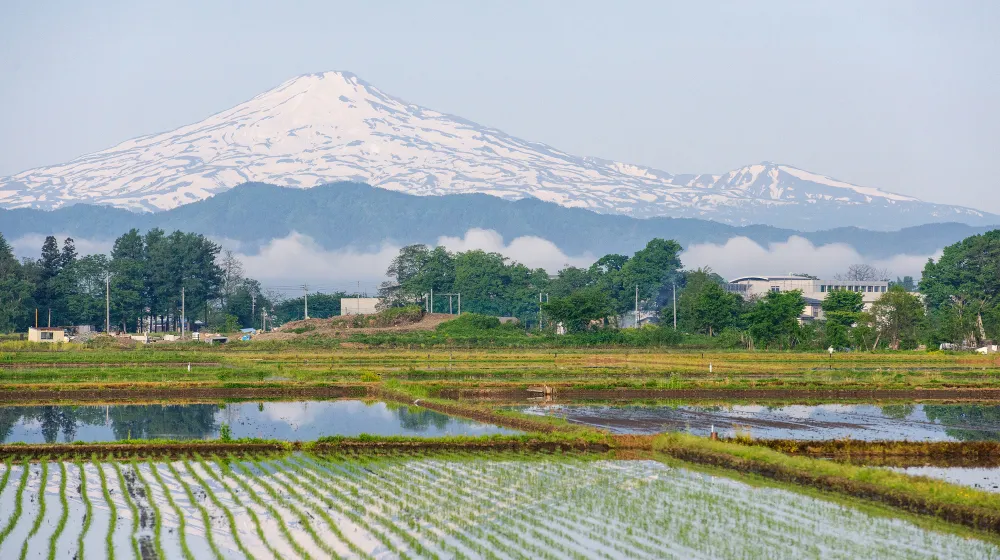
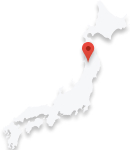
The best Onsen in Akita 2024
Akita Prefecture is located in the northwestern part of what is called the Tohoku region in northern Honshu, Japan. The western part of the prefecture faces the Sea of Japan, and the central and eastern parts are surrounded by the Ou Mountains and the Dewa Mountains.
The prefecture is blessed with many onsens due to its mountainous terrain, and there are several well-known onsen resorts in the prefecture, which have been used by many people for their beneficial effects since ancient times.
The forested area in the prefecture is the sixth largest in Japan, with forests accounting for 72% of the total area, making it a forest prefecture. The Shirakami Mountains, the model for the movie "Princess Mononoke," were registered as a UNESCO World Natural Heritage site in 1993. Lake Tazawa, the deepest lake in Japan, is also located in the prefecture.
In addition, as one of the snowiest areas in Japan, most of the prefecture has a lot of snowfall, and the transition of nature, which shows completely different appearances in spring, summer, fall, and winter, is one of the highlights.
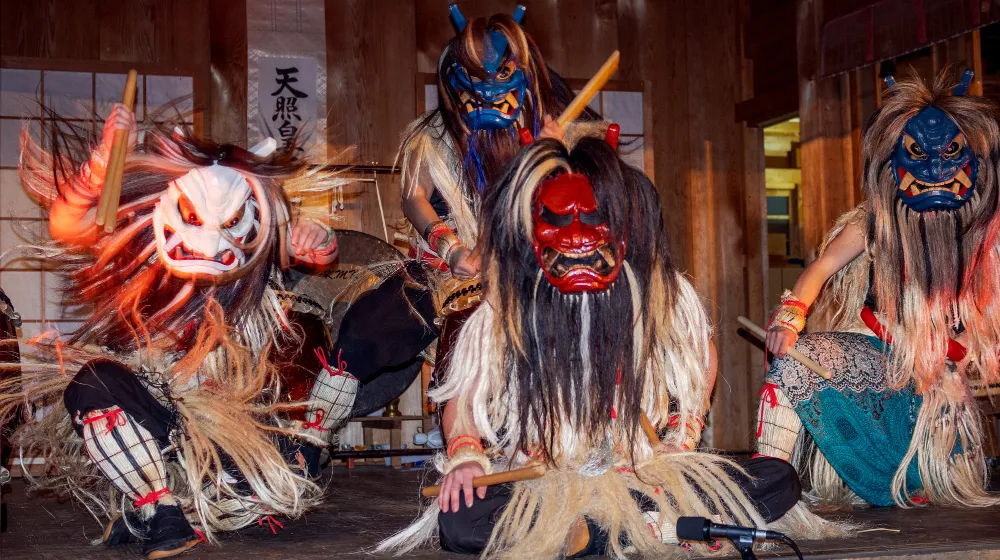
In addition, the prefecture is known as having the largest number of Important Intangible Cultural Properties in Japan, due in part to the fact that many of the old customs and events have been handed down from generation to generation.
Many of the towns and villages in the prefecture still retain the scenery of old Japan, so simply touring the area in conjunction with festivals and events that have been designated Important Intangible Cultural Properties will allow you to experience a time-slip.
Of course, there are also a variety of outdoor sports that take advantage of nature. Here, too, beautiful lakes, rivers, oceans, and mountains offer a variety of sports throughout the four seasons.
Get to know Akita
Access
Akita Prefecture is located in the northwestern part of Honshu (main island of Japan) and has a mountainous terrain, giving it an image of being farther away from the Tokyo metropolitan area than other northeastern regions. The prefecture has two airports, Akita Airport and Odate-Noshiro Airport, so it is possible to visit by air. Each airport is connected to major cities by bus, making access by air smooth.
From Tokyo
<Shinkansen / Train / Bus>
Tokyo Station (JR Tohoku Shinkansen Komachi) → Akita Station (about 3 hours 37 minutes)
<Bus>
Tokyo Station Yaesu South Exit Bus Stop (Highway Bus Dream Akita/Tokyo) → Akita Station East Exit (about 8 hours and 30 minutes)
<Car>
Tokyo Station → Akita Station (about 7 hours 35 minutes)
From Haneda Airport
<Airplane>
Haneda Airport (JAL) → Akita Airport/ Akita Airport bus stop (Akita Chuo Kotsu Akita Airport Limousine Bus) → Akita Station West Exit bus stop (about 2 hours)
From Sendai
<Shinkansen / Train / Bus>
Sendai Station (JR Tohoku Shinkansen Komachi) → Akita Station (about 2 hours and 30 minutes)
<Bus>
Sendai Station bus stop (Highway Bus Senju-go) → Akita Station East Exit (about 3 hours and 50 minutes)
<Car>
Sendai Station → Akita Station (about 3 hours and 10 minutes)
From Niigata
<Shinkansen / Train / Bus>
Niigata Station (JR Joetsu Shinkansen Komachi) Omiya Station (JR Tohoku Shinkansen Komachi) → Akita Station (about 4 hours 55 minutes)
<Ship>
Niigata Port (Shin Nihon Ferry) → Akita Port (about 6 hours 35 minutes)
From Osaka
<Shinkansen / Train / Bus>
Shin-Osaka Station (JR Tokaido Shinkansen Nozomi) → Tokyo Station (JR Tohoku Shinkansen Komachi) → Akita Station (about2 hours 30 minutes)
From Osaka International Airport
<Airplane>
Osaka International Airport (JAL) → Akita Airport/ Akita Airport bus stop (Akita Chuo Kotsu Akita Airport Limousine Bus) → Akita Station West Exit bus stop (about 2 hours 30 minutes)
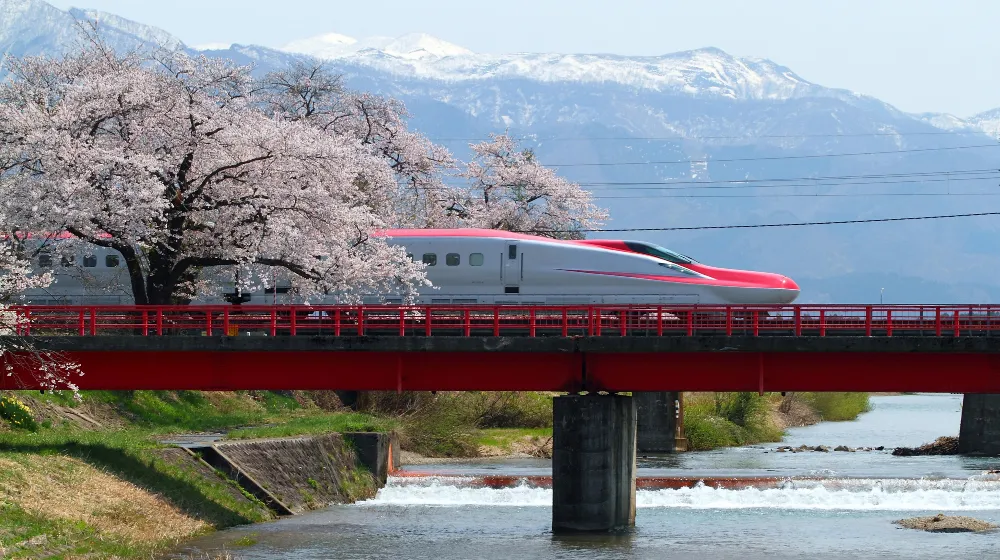
History
Akita Prefecture, located in the western part of the Tohoku region in northern Honshu, Japan, faces the Sea of Japan on the west side and is surrounded by mountains on the east side. As a result, most of the inland and eastern parts of the prefecture are designated as special heavy snowfall areas in winter, and Akita has the fewest hours of sunlight in Japan. Because of the mountainous terrain, forests account for a large proportion of the area's total area, which is rich in natural beauty.
Because of this abundance of nature, many traces of people living in this area have been found since the Paleolithic period. It seems that many settlements were formed during the Jomon Period, and there are many ruins from that era, and these historical sites are now open for visitors.
Many of them are registered as UNESCO's World Cultural Heritage Sites "Jomon Prehistoric Sites in Northern Japan" and are open to the public.
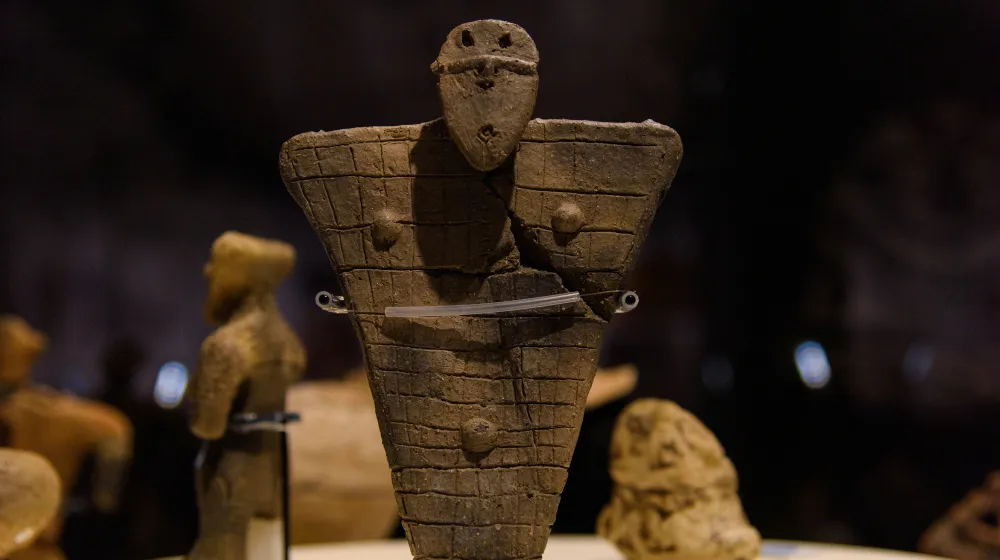
After the unification of Japan in the 8th century, the area was called "Emishi" and continued to resist the Yamato court until the end of the 8th century, but after the unification, trade with Asian countries became prosperous, especially by using the ports on the Sea of Japan. From around the 11th century, the region was ruled by the Oshu Fujiwara clan, and their stronghold of Hiraizumi prospered to the extent that it was known as the Kyoto of the East, and many western Japanese cultures entered the Tohoku region.
Later, during the Edo period (1603-1867), new land development and mine development progressed, laying the foundation for what is now one of the leading rice-producing areas in Japan. Akita also developed its forests and became a production center of Akita cedar, one of the three most beautiful forests in Japan.
In the Meiji era (1868-1912), Akita Prefecture was renamed Akita Prefecture, and more efforts were made to develop agricultural land and produce Akita cedar.
In the Heisei era (1989), the Akita Shinkansen "Komachi," which connects to the Tohoku Shinkansen, opened, and with better access to the Tokyo metropolitan area, more and more people began to visit Akita.
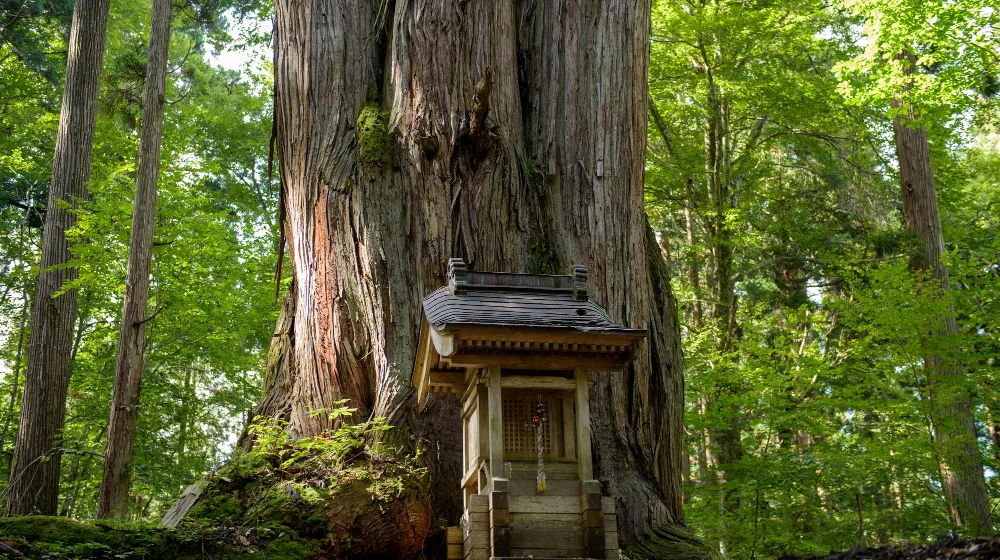
Akita Prefecture is rich in nature, and is home to some of the country's most famous mountainous areas, including the Ou Mountains and the Dewa Mountains.
The oldest onsens in the prefecture are said to have been discovered or opened 1,200 years ago. Nyuto Onsen, Akinomiya Onsen, Doroyu Onsen, and Tamagawa Onsen are some examples. There are six major onsens in the prefecture, most of which appear in the onsen rankings.
The abundance of nature in this prefecture, which has many natural parks and the largest number of cultural heritage sites in Japan, may also contribute to its attractiveness as a place to enjoy onsens.
Another attraction of the region is its rich food culture, which has long had the custom of making a lot of preserved foods due to the region's unique characteristics of low sunshine hours and heavy snowfall. In particular, there are many traditional fermented foods (such as sake and pickles), and since there are many other high-quality ingredients, trips to explore the history of food culture are becoming increasingly popular these days.
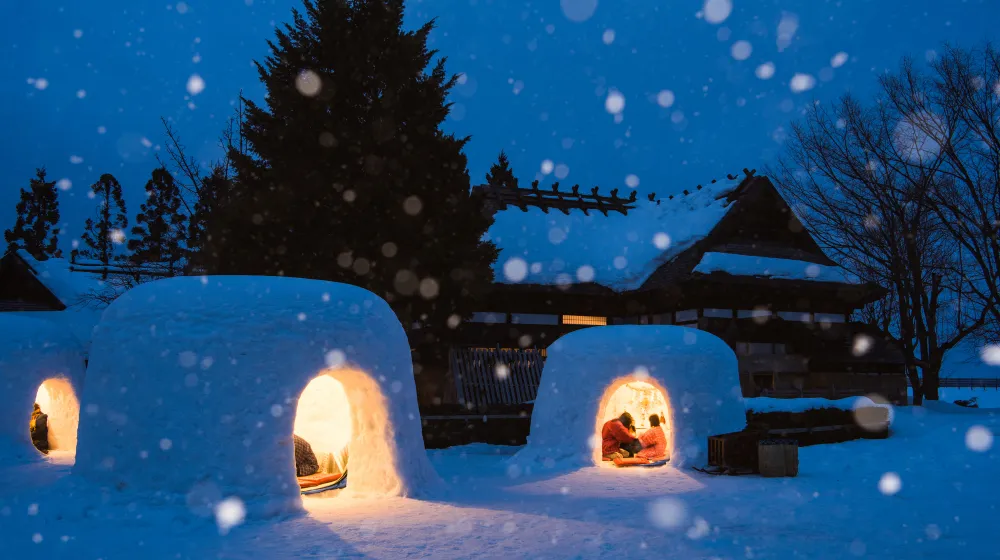
Onsen areas
Nyuto Onsen
It is a popular onsen resort that consistently ranks high in domestic onsen rankings and is ranked No. 1 in the list of most coveted onsens in Japan. It is located in the eastern part of the prefecture, in a rugged mountainous area bordering Iwate Prefecture, with Lake Tazawa, the deepest caldera lake in Japan, nearby. Because of its depth, Lake Tazawa never freezes over in winter, despite the heavy snowfall in the area.
Nyuto Onsen is located at the foot of Mt. Nyuto (Eboshidake) in Towada-Hachimantai National Park, which straddles the border between Akita, Iwate, and Aomori prefectures. It is an onsen village scattered along the Sendachi River, which flows from Mt. Nyuto into Lake Tazawa, in a virgin beech forest.
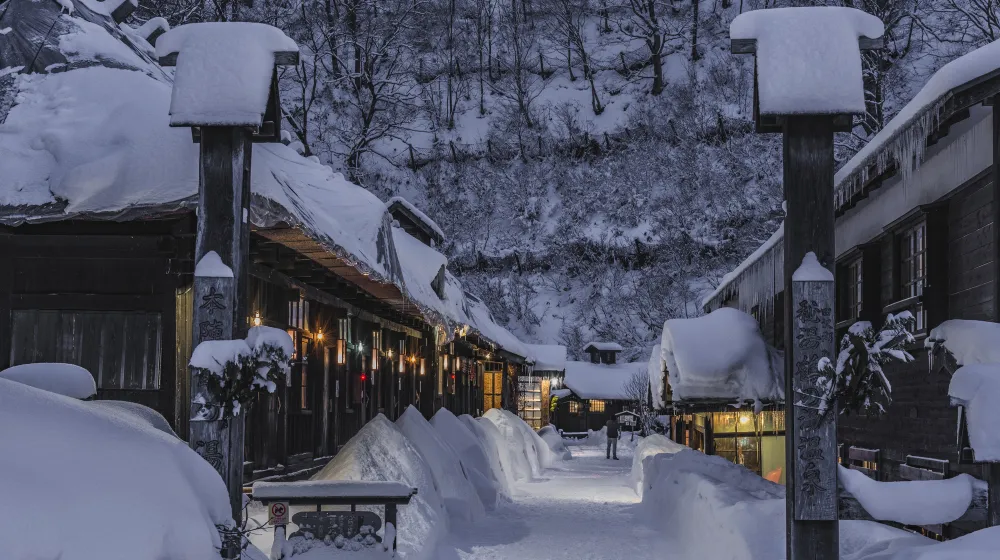
It is said that the first onsen opened in 1615 and was called "Tazawa-no-yu" at that time, with "Tsuru-no-yu" still in operation as a bathhouse today.
Nyuto Onsen is a unique onsen resort in Japan with seven bathhouses, each with its own unique source. There are also 10 different types of spring qualities, so visitors can enjoy different types of onsens in a single hot-spring resort.
The spring qualities include sulfur containing, sodium, calcium chloride, hydrogen carbonate spring, calcium magnesium sulfate spring, simple spring, simple hydrogen sulfide spring, and acid sulfur spring.
Of course, you can visit any of the seven bathhouses. It has long been said in this area that "visiting seven bathhouses is good for all illnesses," and it is possible to purchase a yumeguri book at any of the seven bathhouses, so it is highly recommended.
The most attractive features of the inn are the tasteful old building of the bathhouse, the high quality of the spring water, and the environment of the virgin beech forest spreading out before your eyes.
In addition, the hot-spring bathhouses offer dishes using ingredients unique to the area and traditional foods, attracting people to this special onsen that can only be experienced in total.
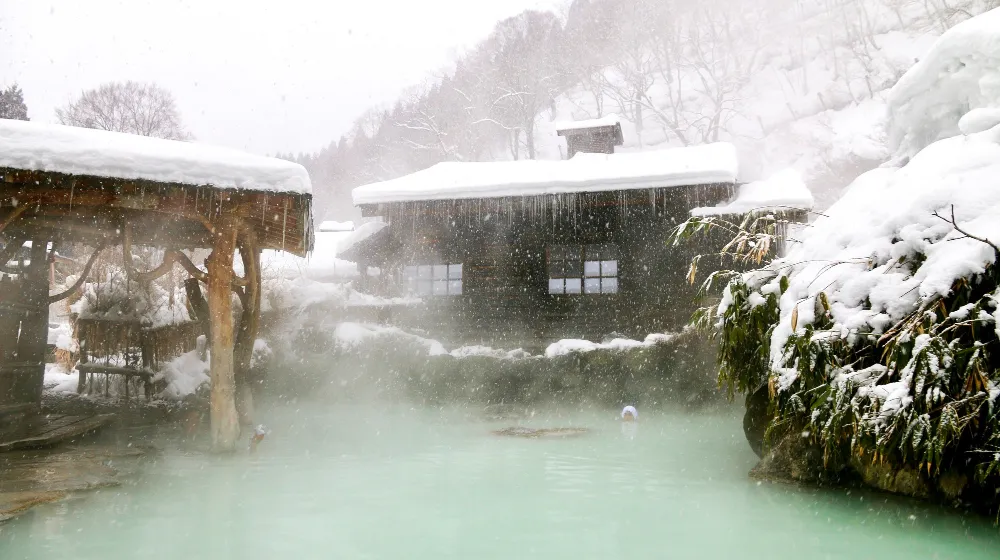
Tamagawa Onsen
Like Nyuto Onsen, Tamagawa Onsen is located in Towada-Hachimantai National Park, and is said to have gushed out as a result of the 806 explosion of Yakeyama in the same park.
For more than 1,200 years since the explosion, the onsen has been gushing out a continuous plume of high quality onsen water, and boasts the largest amount of onsen water from a single location in Japan.
It is said that the onsen resort began as an onsen resort in the early Edo period (1680-1868), when a fisherman who entered the mountains chasing deer found the source. For this reason, it was called "Shika-no-yu" (onsen for deer) until the early Showa period (1926-1989).
Since a lot of sulfur was also mined in the area, many people worked here during the Edo period as raw materials for gunpowder. At that time, it was used as a therapeutic bath to cure their illnesses and fatigue.
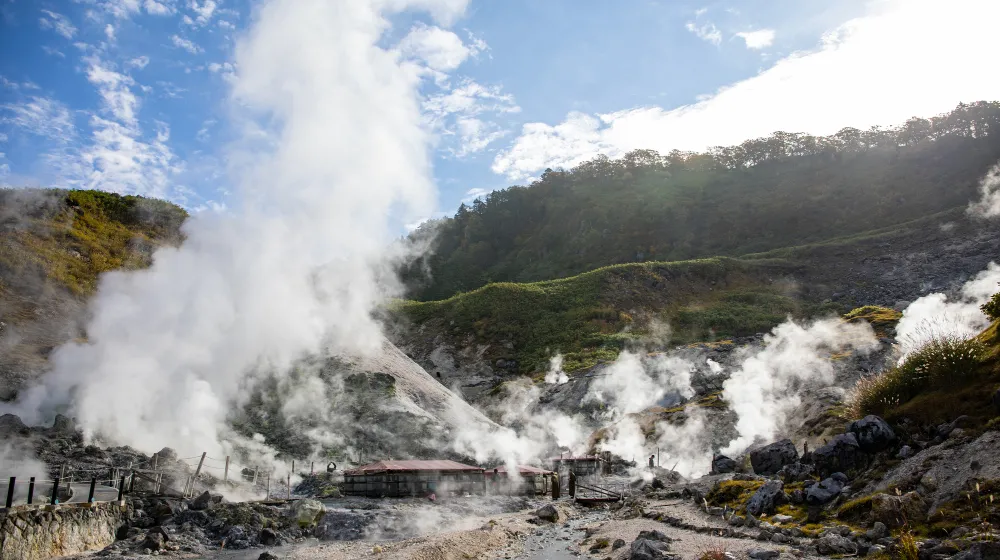
While the highly acidic nature of the spring is said to be effective against various diseases, it was an onsen with both advantages and disadvantages, as it could cause damage to crops if it flowed into the fields at the foot of the mountain. Various methods were used to prevent damage to crops, and a method was sought to utilize the onsen as a therapeutic bath, and now facilities to neutralize the onsen have been constructed near the bathhouse to improve the water quality, allowing it to flow out to the foot of the mountain. In 1942, the Tamagawa Onsen Kenkyukai(Tamagawa Onsen Research Association) was established to study the efficacy of the onsen, and clinical research is being conducted by Tohoku University, Iwate Medical University, Hirosaki University, and others.
The spring quality, which has attracted so much attention that a research institute has been established, is highly acidic, mainly composed of hydrochloric acid, which is rare in the world, and contains radium.
The Tamagawa Onsen Kenkyukai (Tamagawa Onsen Research Association) also provides medical treatment, and many people visit the spa for a full-fledged hot-spring cure using the Tamagawa Onsen, Shin-Tamagawa Onsen, and natural rock baths.
There are 11 types of onsens to suit your physical condition, as well as an indoor bedrock bath and footbath. There is also a promenade that leads visitors to the "Obuki," where the onsen water gushes out, so a walk is recommended to see the living earth.
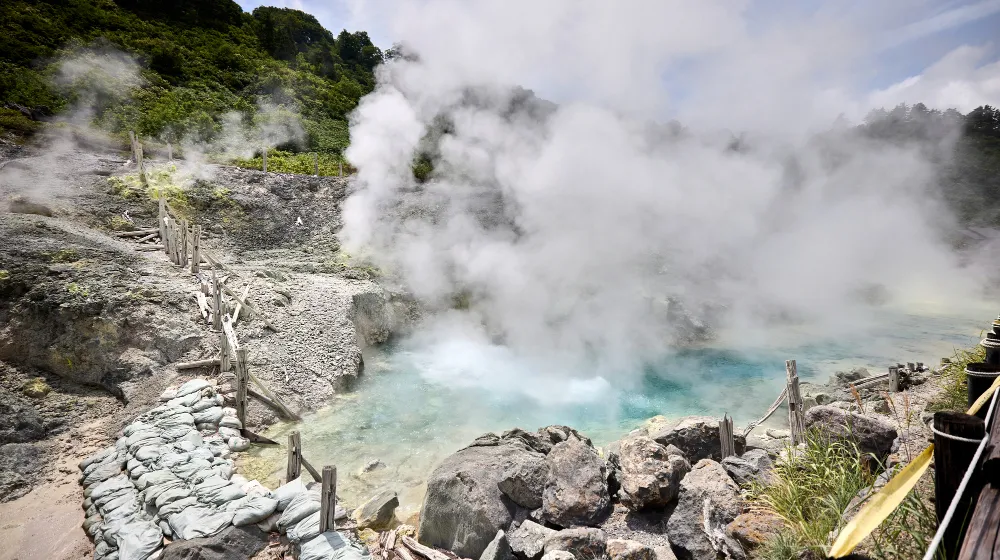
Oga Onsen
This onsen resort is located on the Oga Peninsula, which juts out into the Sea of Japan on the western side of Akita Prefecture.
The entire Oga Peninsula is designated as the Oga Peninsula-Oogata Geopark, and one-third of the peninsula is also designated as Oga National Quasi-Park, making it a historically and topographically valuable area.
The Oga Peninsula is famous for the custom of "Namahage of Oga," a nationally designated Important Intangible Folk Cultural Property, which has been registered as an Intangible Cultural Heritage by UNESCO. Even now, there are many mysteries as to why this custom was born and took root in this area.
It is said that Oga Onsen, located on such a charming peninsula, began in the Heian period (794-1192). It is said that when the barbarian general Sakagami Tamuramaro was on his eastern expedition, he discovered an onsen here and rested his soldiers.
In the Edo period (1603-1867), Lord Satake, who ruled this area, was also a favorite bathing guest, and the onsen was even included in the Edo Onsen ranking list.
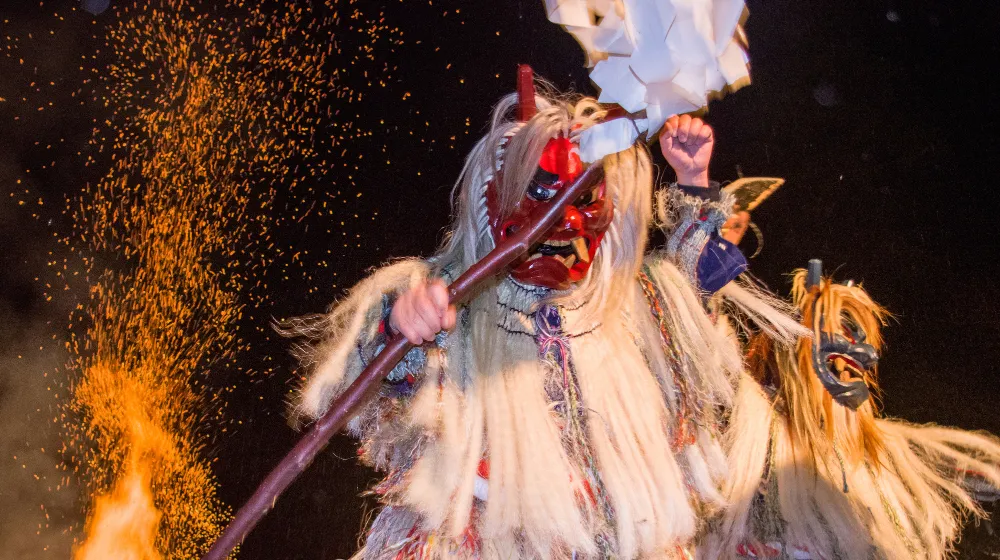
Later, from the middle of the Meiji period (1868-1912), open-pit mining of limestone was conducted in the area, and many people involved in the mining site began to visit. The area was once called Ishiyama Mine, and the onsen was also called Ishiyama Onsen at that time.
After the mining was completed around 1952, the area was transformed into a tourist onsen, and onsen hotels began to open in the area.
Today, there are seven onsen bathhouses in Akita, and many people are entertained by them.
The spring is a chloride spring with salinity close to that of seawater, due to its location near the coast. It is a rare place where more than half of the inns have their own springs. It is called "hot water of heat" because the salt on the skin prevents evaporation of sweat and increases the heat-retaining effect.
After relaxing in the onsen, visitors to Oga Onsen can enjoy Ishiyaki cuisine, a local dish filled with seafood from the rich sea, meet "Oga's Namahage," and enjoy the great nature of the Geopark. In this way, there are many places to enjoy this onsen.
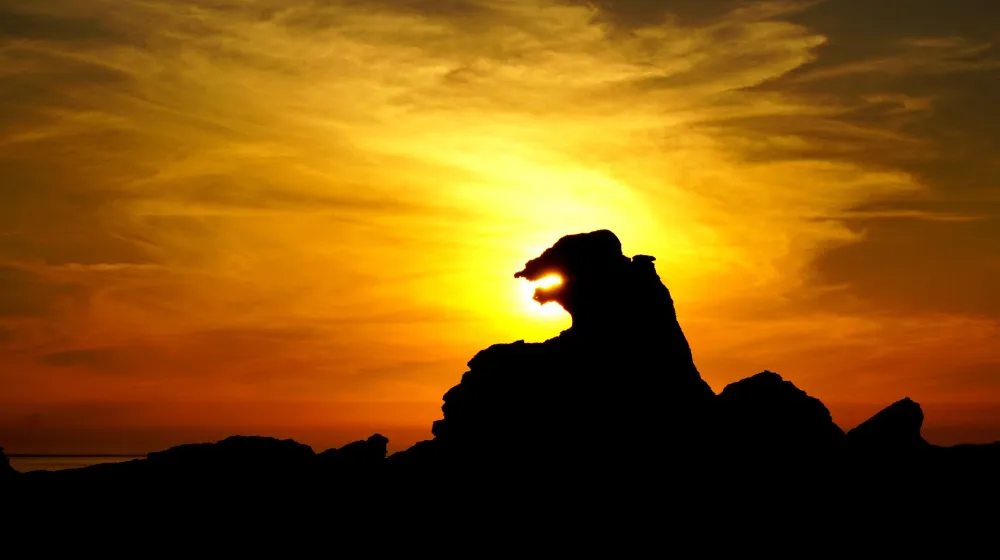
Oyasukyo Onsen, Akinomiya Onsen
Oyasu Onsen and Akinomiya Onsen are located in Yuzawa City in southeastern Akita Prefecture, on the border of Yamagata and Miyagi prefectures.
The entire area of Yuzawa City, which is considered the southern gateway to Akita, is also considered a Yuzawa Geopark, where the Kamimuroyama granitoids of approximately 97 million years ago and traces of numerous volcanic eruptions can be seen.
Although there seem to be no notable volcanoes in this area, the volcanoes that once created this land are still active as "invisible volcanoes" that live deep underground. This activity has produced an abundance of onsens that give the area its name, Yuzawa.
Oyasu Onsen is located along Oyasu Gorge in the upper reaches of the Minase River. Nearby, visitors can see the 98°C hot air and steam billowing white smoke from the "Oyasukyo Daifunto". The valley between the mountains is 8 km deep, and you can feel the energy of the earth from the steepness of the valley.
It is said that such Oyasu Onsen started in the early Edo period (1603-1867) and was used as a therapeutic onsen in the deep mountains. The springs are sodium chloride/sulfate springs and alkaline simple hot springs, and the area boasts an abundance of onsen water.
The area, which also experiences heavy snowfall, is a place where visitors can relax just by admiring the changing of the seasons.
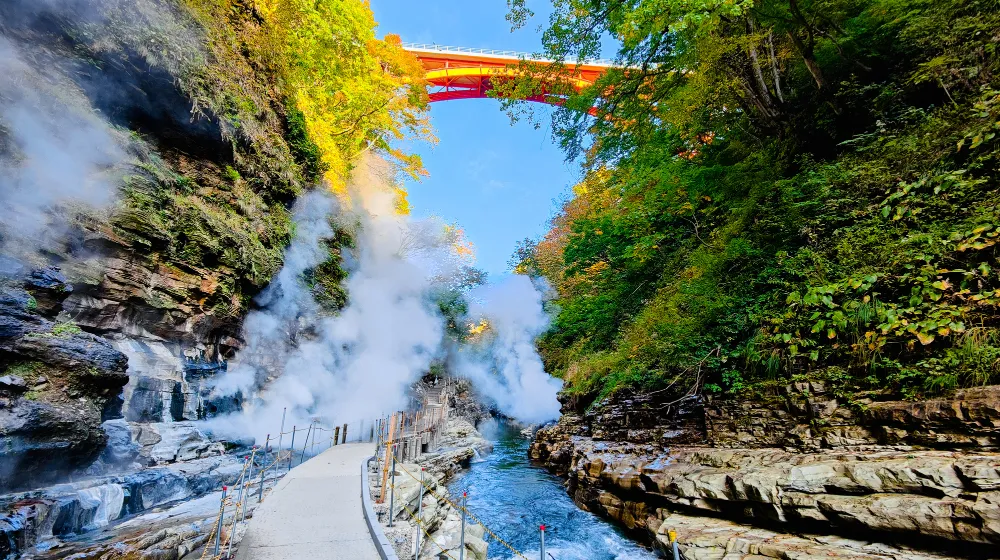
About 25 km away from Oyasu Onsen, or 35 minutes by car, is Akinomiya Onsen. It is said that this onsen was discovered about 1,200 years ago. It is said to be the oldest onsen resort in the prefecture, with a onsen hotel established in 1702.
Mt Kurikoma, each of the hot-spring resorts scattered at the foot of Mt. Kurikoma is a luxurious hot-spring resort with its own hot-spring source, and is popular for its quiet and serene atmosphere loved by writers and cultured people.
The spring water is simple and slightly acidic, and visitors can enjoy "Kawahara no yukko," where they can dig out the riverbank of the Yakunai River that flows through the onsen area to create their own footbath.
Akinomiya Onsen also experiences heavy snowfall in winter, but the "Kadaru Yukidaruma" festival held in winter is popular for its many miniature snow huts lined up and lit by candles, creating a fantastic atmosphere.
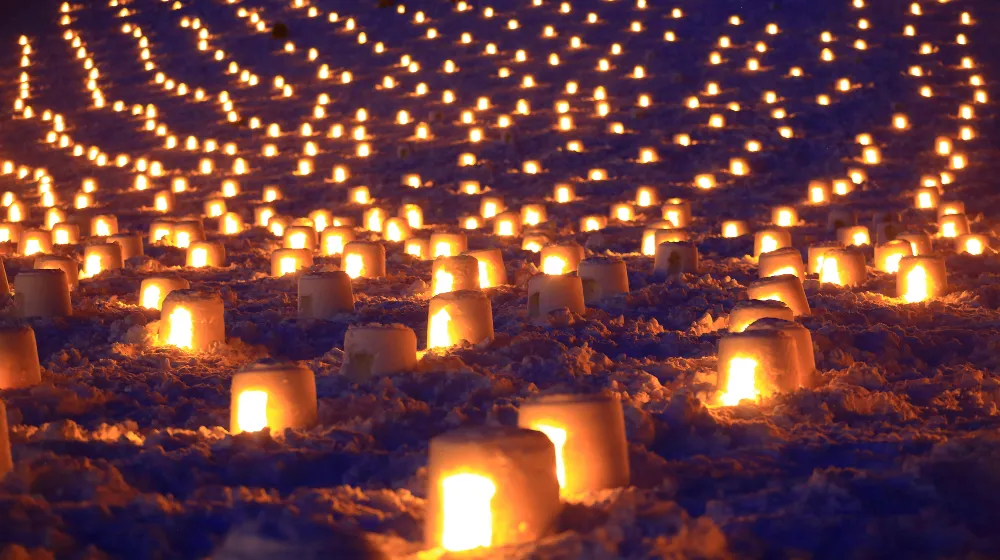
Oyu Onsen / YuzeOnsen
Oyu Onsen and YuzeOnsen are onsen resorts located in Kazuno City on the northeastern edge of Akita Prefecture, bordering on Aomori and Iwate Prefectures. Nearby is Lake Towada, a caldera lake. Lake Towada is the third deepest lake in Japan after Lake Tazawa, also in Akita.
The area around Lake Towada is also designated as Towada-Hachimantai National Park, and even though the area where both onsens are located a short distance away from the park is not within the park, it is blessed with rich and deep nature and offers beautiful scenery.
Oyu Onsen, located about 27 km from Lake Towada, is an onsen resort with onsen bathhouses scattered along a river called Oyu River. The onsen is said to have opened in 1469, some 800 years ago.
As the name Oyu River implies, the onsens naturally gushing from the river were first used. Because of the quality and abundance of the onsens, the area was known as "Kazuno's Famous onsen" in the Edo period and was a recreational onsen resort for the Morioka clan. Since the beginning of the Showa period (1926-1989), it has been visited by many people as a gateway to Lake Towada sightseeing. The spring is a sodium chloride spring, and most of the bathhouses offer one-day bathing.
Nearby is the Oyu Stone Circle, which is said to be approximately 4,000 years old and is registered as a UNESCO World Heritage Site as part of the "Jomon Prehistoric Sites in Northern Japan" .
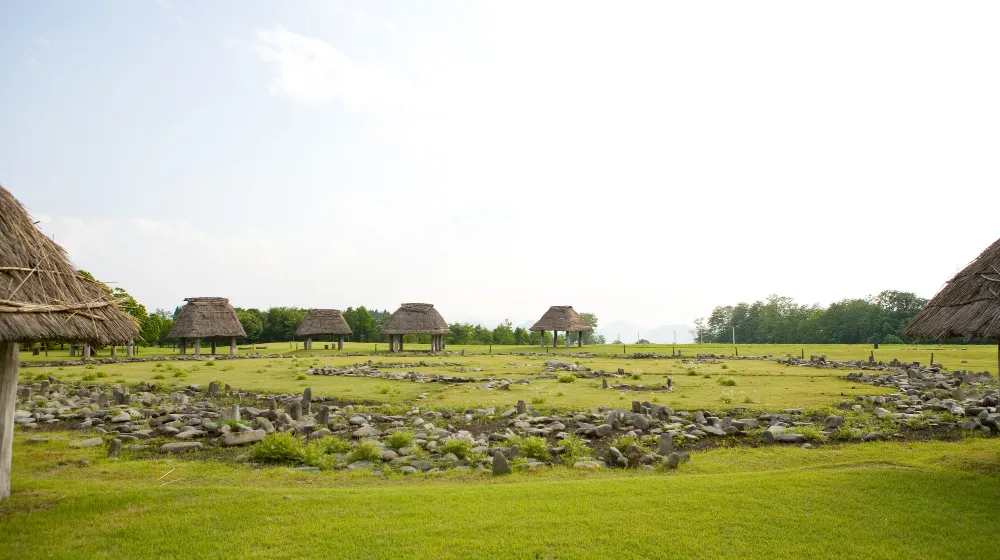
Yuze Onsen is an onsen resort located 25 km south of Oyu Onsen, near Yuze Gorge, a scenic spot in the Yoneshiro River basin. Yuze Onsen also began using onsens that naturally gushed from the river, and developed into the onsen resort it is today.
Although it is a new onsen resort, it is located near YuzeValley, one of the "Thirty New Akita Views," and is popular for its cozy yet relaxed atmosphere. The old Kazuno Highway along the Yone River is a great place to stroll. The beauty of the mountain valley and the murmuring of the river are pleasant, and the local cuisine, kiritanpo, served at the yuyado, is recommended for those who want to spend a relaxing time. The spring water is alkaline simple hot spring, which is also known as "hot water of beauty" (hot water for beautiful women) because it is effective in beautifying the skin.
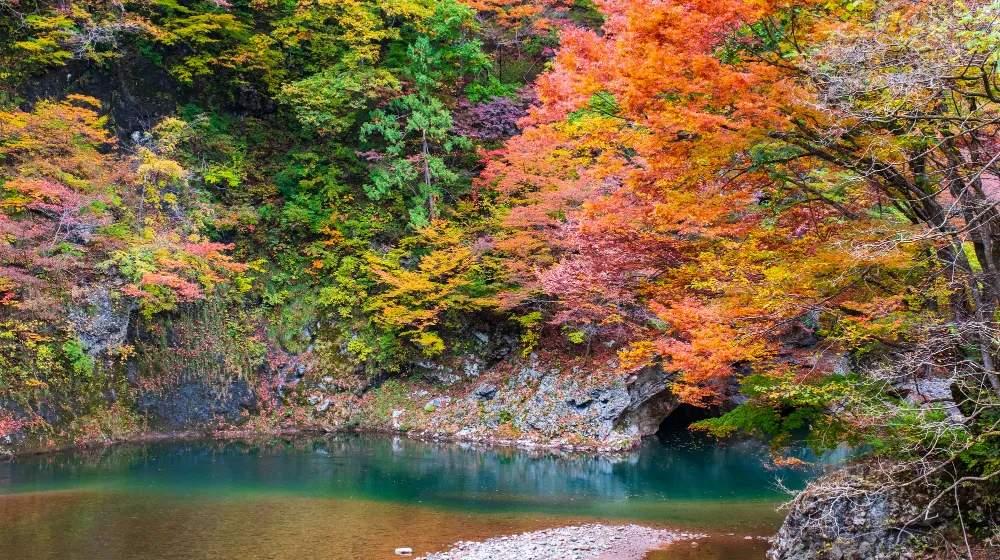
Sarukura Onsen
Sarukura Onsen is an onsen resort located in Yurihonjo City, which borders Iwate Prefecture in the southernmost part of Akita Prefecture, at the foot of the famous Mt Chokai.
Chokai, which has been the object of mountain worship since ancient times. Chokai from the windows of this cozy onsen resort. There is also a ski resort nearby, making it popular among winter sports enthusiasts.
The spring is clear and colorless, with a thickening effect that warms and beautifies the skin, and is said to be the "hot water of beauty".
Chokai National Park, and there are many places of interest such as marshlands and valleys, so you can enjoy a pleasant stroll along with the onsen baths.
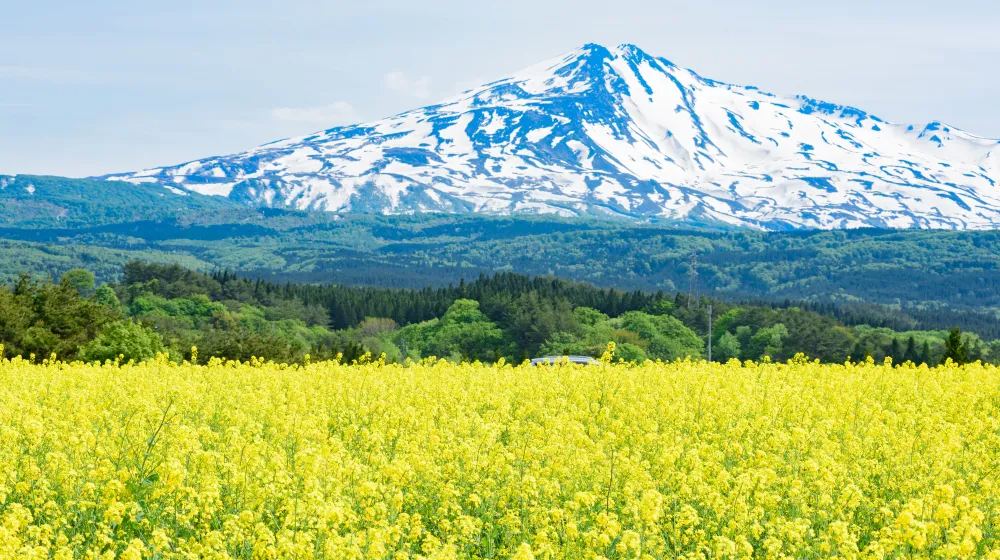
Search by Prefecture
Search by Onsen area
- Hokkaido
- Nagano
- Akita
- Kanagawa
- Yamagata
- Shizuoka
- Gifu
- Hyogo
- Wakayama
- Yamanashi
- Kumamoto
- Oita
- Fukushima
- Tochigi
- Gunma
- Ishikawa
- Shimane
- Ehime
- Saga
- Kagoshima
